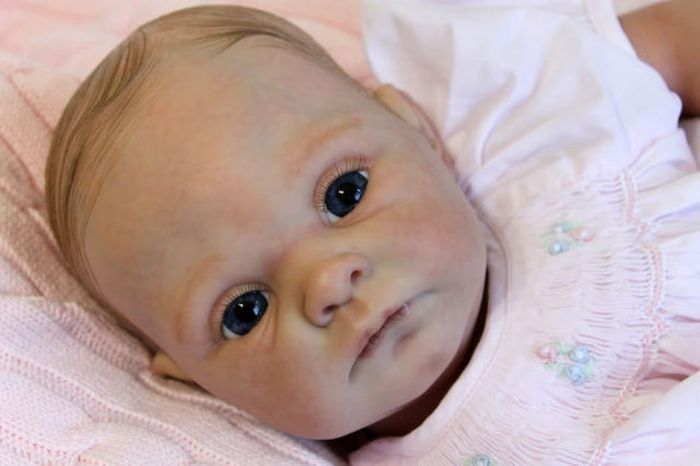|
|
Realistic Reborn Baby Doll
|
The use of an effigy to perform a spell on someone is documented in African, Native American, and European cultures. Examples of such magical devices include the European poppet and the nkisi or bocio of West and Central Africa. In European folk magic and witchcraft, poppet dolls are used to represent a person, for casting spells on that person. The intention is that whatever actions are performed upon the effigy will be transferred to the subject based in sympathetic magic. The practice of sticking pins in so called voodoo dolls have been associated with African-American Hoodoo folk magic. Voodoo dolls are not a feature of Haitian Vodou religion, but have been portrayed as such in popular culture, and stereotypical voodoo dolls are sold to tourists in Haiti. Likely the voodoo doll concept in popular culture is influenced by the European poppet dolls. A kitchen witch is a poppet originating in Northern Europe. It resembles a stereotypical witch or crone and is displayed in residential kitchens as a means to provide good luck and ward off bad spirits.
Hopi Kachina dolls are effigies made of cottonwood that embody the characteristics of the ceremonial Kachina, the masked spirits of the Hopi Native American tribe. Kachina dolls are objects meant to be treasured and studied, in order to learn the characteristics of each Kachina. Inuit dolls are made out of soapstone and bone, materials common to the Inuit people. Many are clothed with animal fur or skin. Their clothing articulates the traditional style of dress necessary to survive cold winters, wind, and snow. The tea dolls of the Innu people were filled with tea for young girls to carry on long journeys. Apple dolls are traditional North American dolls with a head made from dried apples. In Inca mythology Sara Mama was the goddess of grain. She was associated with maize that grew in multiples or were similarly strange. These strange plants were sometimes dressed as dolls of Sara Mama. Corn husk dolls are traditional Native American dolls made out of the dried leaves or husk of a corncob. Traditionally they do not have a face. The making of corn husk dolls was adopted by early European settlers in the USA. Early settlers also made rag dolls and carved wooden dolls, called Pennywoods. La última muñeca, or "the last doll", is a tradition of the Quinceañera, the celebration of a girl's fifteenth birthday in parts of Latin America. During this ritual the quinceañera relinquishes a doll from her childhood to signify that she is no longer in need of such a toy. In the United States, dollmaking became an industry in the 1860s, after the Civil War.
Matryoshka dolls are traditional Russian dolls. They consist of a set of hollow wooden figures which open up and nest inside each other. The first set was carved in 1890. Traditionally the outer layer is a woman, dressed in a sarafan, a long and shapeless traditional Russian peasant jumper dress. The figures inside may be of either gender; the smallest, innermost doll is typically a baby made from a single piece of wood. The painting of each doll can be elaborate. The dolls often follow a theme. Aside from the typical traditional peasant girls, the themes vary from fairy tale characters to Soviet leaders.
In Germany clay dolls have been documented as far back as the 13th century, and wooded doll making from the 15th century. Beginning about the 15th century, increasingly elaborate dolls were made for Nativity scene displays, chiefly in Italy. Dolls with detailed, fashionable clothes were sold in France in the 16th century, though their bodies were often crudely constructed. The German and Dutch peg wooden dolls were cheap and simply made, and were popular toys for poorer children in Europe going back to the 16th century. Wood continued to be the dominant material for dolls in Europe until the 19th century. Through the 18th and 19th centuries wood was increasingly combined with other materials, like leather, wax and porcelain and the bodies made more articulate. It is unknown when dolls' glass eyes first appeared, but brown was the dominant eye color for dolls up until the Victorian era when blue eyes became more popular, inspired by Queen Victoria.
|
|









